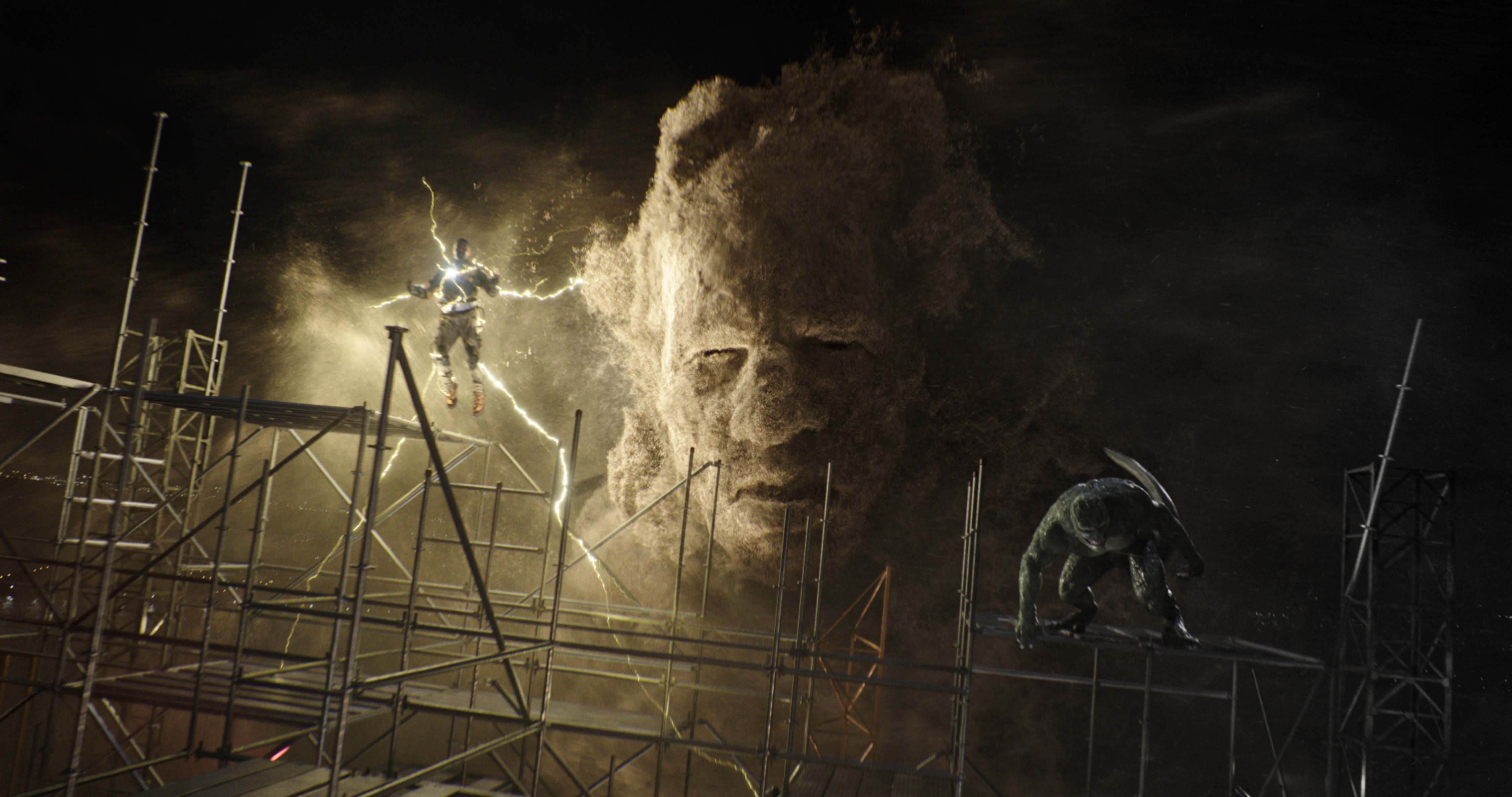Create a free profile to get unlimited access to exclusive videos, sweepstakes, and more!
Turns out one of Spider-Man: No Way Home’s big bads wasn’t needed on the movie set
He may be CGI, but Thomas Hayden Church’s Sandman is still a comic book beast.

Spider-Man: No Way Home is one of Marvel’s biggest action and character-palooza movie spectacles to date, at least one that doesn’t have an Avengers ensemble tag in its title. Fans of Sony’s latest entry in the post-Endgame Spidey series have been treated to a smorgasbord of both heroes and villains, not to mention some of the MCU’s most dazzling visual effects thus far, all the better to bring larger-than-life baddies like Thomas Haden Church’s Sandman (aka Flint Marko) to life.
With so much going on on-screen (plus just the sheer cool factor of seeing Sandman’s familiar CGI-created face making a new movie appearance a whopping 14 years after first antagonizing Tobey Maguire’s web-slinging adventure in Spider-Man 3), one key thing viewers might have missed is the fact that Church himself is more a voice than a human-character presence in the movie. In fact, as VFX supervisor Kelly Port revealed in a recent interview, Church was apparently able to make his contributions to the film without ever actually having to show up on the film’s set.
“There were two parts to him, where he’s more humanoid and talking, and when he is in the sanctum,” Port explained to befores & afters in a far-ranging talk about the film’s visuals. “…”Well, we had his voice. We weren't able to get a lot of visuals on him, but we were able to get his voice for sure and we got scans and textures and things like that.”
With a writhing, swirling villain like Sandman, though, Church’s voice was the truly vital factor, in addition to the effects, in bringing the character’s big-screen return convincingly to life. Today’s technology afforded the VFX team far more freedom in playing up Sandman’s final form than was available when he first debuted Sam Raimi’s 2007 Spidey threequel. Port said the creators tried to make the most of that — armed, of course, with Church’s vocal contributions.
"Then Imageworks, for the end battle, they did the much bigger Sandman with big FX sims,” he explained. “There were a lot of big sims in the end battle, not only with Sandman, but for the shield falling and crashing through all the scaffolding and millions and millions of pieces all interacting with each other, the crane falling through Sandman's head and all that good stuff…there’s a little bit of collective post-traumatic stress disorder with anyone who had previously worked on Sandman. And so I knew that going in, I had a feeling this was going to be challenging both technically and creatively, just to get that character looking right and behaving right. But I think we were successful in the end. I think it looked pretty cool.”
So do we. From Sandman’s oversized aggression to Doc Ock’s flailing octo-arms to Electros’ crackling energy effects, the baddies that crowd the screen in Spidey’s topsy-turvy multiverse rift are about as close as movies have ever come to nailing the live action fantasies inspired by their comic book origins. Catch Church (or at least his voice) as Sandman alongside Tom Holland and the rest of the sprawling Spidey crew in theaters now, where Spider-Man: No Way Home is still going strong.


























